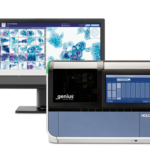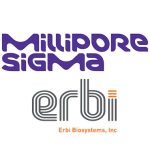Despite significant progress in disease testing methodologies, notable deficiencies persist. Misdiagnosis, characterized by the detection of false positives, is prevalent across various screening procedures. Moreover, many severe illnesses currently require expensive, invasive tests that are frequently inaccessible to patients. Compounding the issue, certain diseases with non-trivial morbidity and mortality rates lack a universally accepted screening protocol. However, breath-based screening tests hold promise to fundamentally change this reality.
Well before the onset of physical symptoms, the body undergoes metabolic changes in response to a disease resulting in the production of a distinct mix of volatile organic compounds (VOCs). This combination of VOCs represents a distinct “scentprint” indicative of the disease and is detectable in breath samples. Targeting these breath scentprints allows for a real-time, noninvasive method for disease screening, offering numerous benefits. Perhaps most notably, breath-based screening can help optimize clinical pathways by facilitating earlier and more effective referrals for confirmatory testing, leading to timelier interventions and improved patient outcomes. Thanks to technological innovation over the past two decades, such testing is now becoming a viable reality.
To appreciate the far-reaching implications of breath-based screening, let’s explore three prevalent, potentially life-threatening diseases, each of which poses unique screening hurdles. Subsequently, we’ll delve into how breath-based analysis can help overcome those challenges.
Lung Cancer
Globally, lung cancer is the leading cause of all cancer-related deaths. [1] [2] Almost three-fourths of all cases are not found until the disease is locally advanced or metastasized. Even so, screening for lung cancer is abysmally low: only 4.5% in patients defined as high risk are screened. [3] Yet the latest SEER data shows that earlier diagnosis can increase the five-year relative survival rate by two- to seven-fold. The current gold standard for lung cancer screening is low-dose computed tomography (CT). But CT is not accessible to everyone, insurance may not cover the cost, and up to one fourth of the results are false positives. [4] In contrast, a 2022 study of 158 patients showed that a panel of VOC biomarkers could detect non-small cell lung cancer with 85.4% accuracy. [5] A breath-based test could dramatically increase screening accessibility and patient uptake given its potential to be administered at virtually any point-of-care from a pharmacy to a family doctor’s office.
Breast Cancer
Unlike lung cancer screening, almost three-fourths of all women have had a mammogram in the past two years. Mammograms are accurate about 87% of the time. False positives are prevalent in patients with dense breast tissue, younger women, and women taking estrogen. Over a 10-year period, about half of all women getting annual mammograms will have a false-positive finding, [6] and a typical wait time to receive results is a week or longer. The economic burden must be considered as well. The estimated cost associated with women getting a mammogram is $7.3 billion per year, based on an eligible population of 83 million women, with 70% screening rate every two years, and an average cost of $250 per procedure. [7] Yet with a breath-based screening test priced at a fraction of a mammogram’s cost, the healthcare system could potentially save billions of dollars across screening programs.
Breath-based screening that integrates sample collection with analytic capabilities not only costs less, but also enables real-time results, so patients can be stratified faster for confirmatory testing if needed. That can translate into a life-saving difference. For example, a 12-week delay in breast cancer surgery increases the risk of cancer-related death by 26%. [8] In the largest study of its kind to date, 5,047 women were screened using a breath-based panel of 10 VOCs to detect breast cancer; 465 subjects tested positive for breast cancer — which translated to an accuracy of 85–100%, depending on the stage of breast cancer identified. [9]
Tuberculosis
Testing for tuberculosis comes with its own unique challenges. For decades, smear microscopy and sputum culture have been the gold standard for screening and diagnosis. But false negatives are prevalent in many patient populations, including children, pregnant women, patients with extrapulmonary TB, and those with concurrent TB and HIV.
Many new types of tests have been developed but these are costly, require extended wait time for results, and are not feasible to use in highly endemic or rural areas. According to the World Health Organization (WHO), 1.3 million people died of TB in 2022. This underscores WHO’s urgent call for new solutions to meet its “2030 End TB” targets. [10] Metabolomics-based biomarkers — particularly breath scentprints — could be the answer, with the ability to achieve high-yield screening through inexpensive equipment deployable in virtually any setting.
Boundless Potential
The potential of breath-based screenings extends beyond these diseases alone. Similar applications are already in development for cardiovascular diseases, metabolic conditions such as diabetes, and neurodegenerative disorders such as Parkinson’s and Alzheimer’s disease.
While acknowledging its vast potential, we must not overlook that the practical effectiveness of breath-based screening hinges on three key factors. These are the ability to:
- Detect the combination of VOCs that make up the scentprint in very small, sometimes trace, concentrations
- Subtract out the background “noise” that the scentprint is buried within, including that produced by the surrounding environment and other potential confounders
- Produce consistent results in the face of diverse geographic and individual-level factors
Digital odor perception technology holds the key to unlocking the wealth of health information contained within our breath. As a precursor to conventional diagnostics, breath-based screening tests are affordable, non-intrusive, and painless, and their ability to be administered in various healthcare settings empowers physicians with immediate results. This, in turn, promotes more regular healthcare screenings, facilitates earlier disease detection, and enables timely interventions when treatments are most effective.
References:
[1] Adams SJ, Stone E, Baldwin DR, Vliegenthart R, Lee P, Fintelmann FJ. Lung cancer screening. Lancet. 2023;401(10374):390-408.
[2] Siegel RL, Miller KD, Fuchs HE, Jemal A. Cancer statistics, 2022. CA Cancer J Clin. 2022;72(1):7-33.
[3] American Lung Association. 2023 State of lung cancer report: Key findings. Accessed February 7, 2024.https://www.lung.org/research/state-of-lung-cancer/key-findings
[4] National Cancer Institute. Lung Cancer Screening (PDQ®)–Health Professional Version. Updated June 9, 2023. Accessed February 7, 2024. https://www.cancer.gov/types/lung/hp/lung-screening-pdq
[5] Larracy R, Phinyomark A, Scheme E. Infrared cavity ring-down spectroscopy for detecting non-small cell lung cancer in exhaled breath. J Breath Res. 2022;16(2). doi: 10.1088/1752-7163/ac5e4f.
[6] American Cancer Society. Limitations of mammograms. Updated: January 14, 2022. Accessed: February 6, 2024.https://www.cancer.org/cancer/types/breast-cancer/screening-tests-and-early-detection/mammograms/limitations-of-mammograms.html
[7] Badal K, Staib J, Tice J, et al. Cost of breast cancer screening in the USA: Comparison of current practice, advocated guidelines, and a personalized risk-based approach. J Clin Oncol. 2023;41(16_suppl). https://doi.org/10.1200/JCO.2023.41.16_suppl.e18
[8] Hanna TP, King WD, Thibodeau S, et al. Mortality due to cancer treatment delay: systematic review and meta-analysis. BMJ. 20204:371:m4087. doi: 10.1136/bmj.m4087.
[9] Liu J, Chen H, Li Y, et al. A novel non-invasive exhaled breath biopsy for the diagnosis and screening of breast cancer. J Hematol Oncol. 20236;16(1):63. doi: 10.1186/s13045-023-01459-9.
[10] Nogueria BMF, Krishnan S, Barreto-Duarte B, et al. Diagnostic biomarkers for active tuberculosis: progress and challenges. EMBO Mol Med. 2022;14(12):e14088. doi: 10.15252/emmm.202114088.







